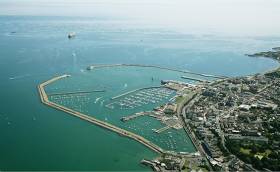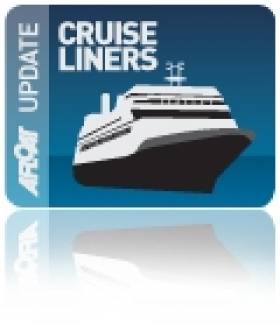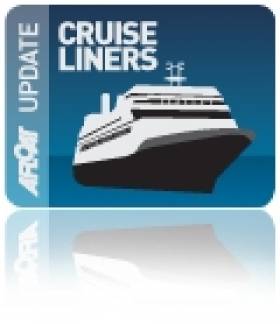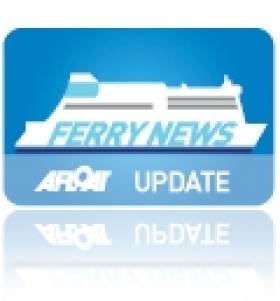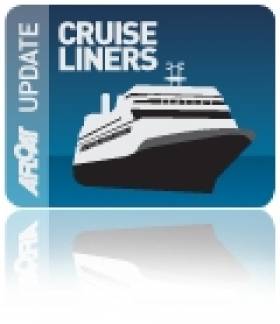Displaying items by tag: Dun Laoghaire Cruise Berth
Cruise Ships 'Super-Sized' Could Still Come to Dún Laoghaire Harbour
#SuperSized - A berth for “super-sized” cruise ships in Dun Laoghaire Harbour could still be provided in spite of the introduction of a development plan which blocks their entry to the harbour.
Councillors have inserted a provision in the new county development plan to limit the size of vessels that can enter the harbour to 250m. However, the move may not be enough to topple a planning application from Dún Laoghaire Harbour Company for a new cruise berth.
In a vote on the county development plan on Wednesday, councillors agreed to “preserve the integrity, natural beauty and historical significance of the harbour by protecting this central area from any cruise berth that would allow cruise ships longer than 250m to come directly into the harbour”.
For more The Irish Times has the story here.
#CruiseConcerns – One of the country's main ports is due to lodge a multi-million development bid with An Bord Pleanala in the next ten days, writes the Herald.ie
The controversial Dun Laoghaire planning application, which has been met with opposition from residents and several local political representatives, is being submitted by Dun Laoghaire Harbour Company.
The harbour company is seeking permission for an €18m cruise berth facility to cater for jumbo cruise ships, which would mean passengers will be able to walk on to the port.
The company hopes the cruise berth will be a boost for the local economy, as predicted in studies carried out so far.
For more on the story, click here.
#CruiseFerry – Royal Princess, one of the largest cruiseships ever to visit Irish waters this week anchored offshore of Dun Laoghaire Harbour yet required the charter of a ferryboat to assist in tendering passengers ashore, writes Jehan Ashmore.
Having watched the ferryboat, Glor na Farraige make her first departure last Tuesday morning out to the anchored massive 142,714 tonnes owned by Princess Cruises, the 3,600 passenger capacity ship's agents had chartered the 244 passenger ferry to transport those between the 8.5m draft ship and the harbour.
On the evening of Royal Princess's departure, the Fireball dinghy racing in Dublin Bay, under the burgee of DBSC was cancelled as previously reported on Afloat.ie. This was due to a combination of 'mother' nature and increased traffic from the ferryboat movements and flotilla of tenders that prevented dinghy racing from within the harbour.
It is not known exactly as to why the cruiseship which is larger than 137,936 tonnes MSC Splendida (see historic Dubin Port docking) had called in for the use of the Aran Island Ferries vessel. Normally cruise ships during anchorage calls rely on their own flotilla of tenders to transfer those ashore.
According to a Dun Laoghaire Harbour spokesperson, future arrangements of a ferryboat tender will be at the discretion of visiting ships during this record-breaking season of 21 callers bringing almost 100,000 passengers and crew.
Next week sees the return off Dun Laoghaire Harbour of Cunard Line's cruise-'liner' Queen Mary 2 which made her maiden call of the south Dublin Bay port this month two years ago.
The French built giant at 151,400 tonnes is to call on 20 May (Wednesday), where the 3,000 passenger / 1,300 crew cruise caller will transport those on board the liner's tenders to disembark at the purpose-built pontoon (as pictured) in Dun Laoghaire Harbour.
The cruise-tender facility was completed in advance of the 2013 call of the famous 'Cunarder' at the harbour's inner Coal Harbour, which is accessed through the marina from where the proposed €18m cruise-berth is to be extended from.
It is from the marina's eastern breakwater near the former Stena HSS fast-ferry berth, that a 435m jetty would run almost into the centre of the harbour.
This is to accommodate the 'next generation' of cruiseships (up to 340m long that is to say Dun Laoghaire only) that would be even longer and larger than the 'Royal' and forthcoming 'Queen'.
#DunLaoghaireFerryCruise - Today a month ago was the first full day in service of Stena Superfast X on the Dublin Port-Holyhead route. By coincidence, today also marks the HSS Stena Explorer's maiden commercial crossing to Holyhead in April 1996, writes Jehan Ashmore.
The launch in March this year of Stena Superfast X on the Dublin Port route effectively replaced HSS Stena Explorer from the alternative Dun Laoghaire route to Holyhead. The fast-ferry catamaran craft which served almost two decades on the historic Ireland-Wales link was withdrawn last year with the final sailing on 9 September.
This leaves Superfast X kept busy running alongside route partner Stena Adventurer to Holyhead, the port in Anglesey where the HSS craft remains idle in a laid-up state.
The 19,638 tonnes craft is a sad sight as she languishes in the inner harbour completed in 1880 as the first purpose built rail and sea terminal of the north Wales port.
Afloat.ie has contacted Stena as to the fate of HSS Stena Explorer which they say at present that there has been no decision made on her future.
When the HSS (High-speed Seaservice) Stena Explorer was introduced, she represented a revolutionary leap in the world ferry industry due in part to her large freight vehicle capability. In addition the adaptation of aviation gas turbine technology. This powered water jets allowing for 99 minutes crossings! during the early heyday years.
It was the sheer sense of space which I recall vividly from making that maiden sailing as she set off from the unique linkspan structure. Also the huge panorama widow at the bow affording excellent views as she departed the mouth in Dun Laoghaire and sped smoothly across tthe Irish Sea.
The single passenger deck layout been split-level was for the majority of the interior very much open plan. Though the opposite applied in terms of having a very restricted open deck space at the stern. From there, the craft had a rather ungainly appearance but was redeemed with a striking futuristic bow lines and the lattice window structure amidships.
A fellow former Irish Sea based sister, HSS Stena Voyager as previously reported on Afloat.ie was scrapped in 2013. She was towed to Öresundsvarvet shipyard in Landskrona, Sweden and was dismantled by Stena Recycling in which parts were re-used for furniture!
Stena Voyager was withdrawn from service two years previously following the closure of the Belfast-Stranraer route. This led to Stena switching Scottish ports to neighbouring Cairnryan also on Lough Ryan.
The relocation of ports involved constructing a purpose built terminal at a site close to Cairnryan named Loch Ryan Port. The facility is from where a pair of sisters of Superfast X operate on the North Channel route on the Belfast-Cairnryan link.
Given the new dynamics of Dun Laoghaire Harbour Company's proposed €18m cruise-berth facility, the former ferry vehicle marshalling area is to be transformed for cruise-related coaches and a taxi-rank.
To what degree will this proposal have should a new operator be found to reopen a seasonal-only service as sought by DLHC. According to the port authority such operations if proved an option would not resume until 2016.
SOS: Over Luxury Cruise Passengers Who 'Won't Stay In Town'
#TradersFears-Cruise passengers will bypass Dun Laoghaire for Dublin's delights, that's what traders fear so that the new €18m berth will be a waste of money, writes The Independent.ie
Nearly 5,000 passengers and crew will disembark next month from a 20-storey floating pleasure palace as the first of 18 super cruisers and four smaller cruise ships sail into the port of Dun Laoghaire, Dublin, for the summer season.
It should be good news, right? A procession of well-heeled visitors coming into the seaside borough that has been hit harder than most by the crash?
But many locals say it won't mean a thing to them.
As previously reported on Afloat.ie, among the record 22 cruise callers will be the anchorage call of the Splendida on May 11, with 1,313 crew and 3,900 tourists.
Each passenger will have paid up to €3,369 to be pampered with 11 nights of wining and fine dining aboard the 333-metre cruise vessel, plying the route from Hamburg to Southampton via Dublin and Scotland.
It boosts all-inclusive access to four restaurants, a jazz bar, ice cream parlour and chocolate shop among its amenities, but passengers and crew are also each expected to spend on average €70 each time they disembark.
Proponents of a plan to turn Dun Laoghaire into a major port of call for luxury cruising ships claim the estimated 100,000 passengers and crew aboard 22 cruise ships berthing at the port this summer will inject an estimated €7m into the local economy - with approximately one-third spent in Dun Laoghaire during a typical 12-hour stopover.
But as the Dun Laoghaire Cruise Stakeholder Group, (DLSG) comprised of the local council and business improvement association and the Dun Laoghaire Harbour Company, begins a two-week public consultation process tomorrow (Afloat.ie adds that the process has already begun since last Monday, 30 March) on re-developing the historical harbour to accommodate super cruise ships, local opinion is sharply divided.
"It's madness," Peter Kerrigan, a local businessman and chair of the Dun Laoghaire/Rathdown Ratepayers' Association, said bluntly of the €18m plan to build a new berth and quay capable of accommodating super cruise ships up to 340 metres long.
Super cruisers currently have to berth off-shore with passengers getting to and from dry land via a shuttle boat.
The plan also includes transforming the now-defunct Stena Line ferry marshalling area into coach, taxi and mini-bus parking and building a new boardwalk overlooking the marina.
For more on this story, click here.


























